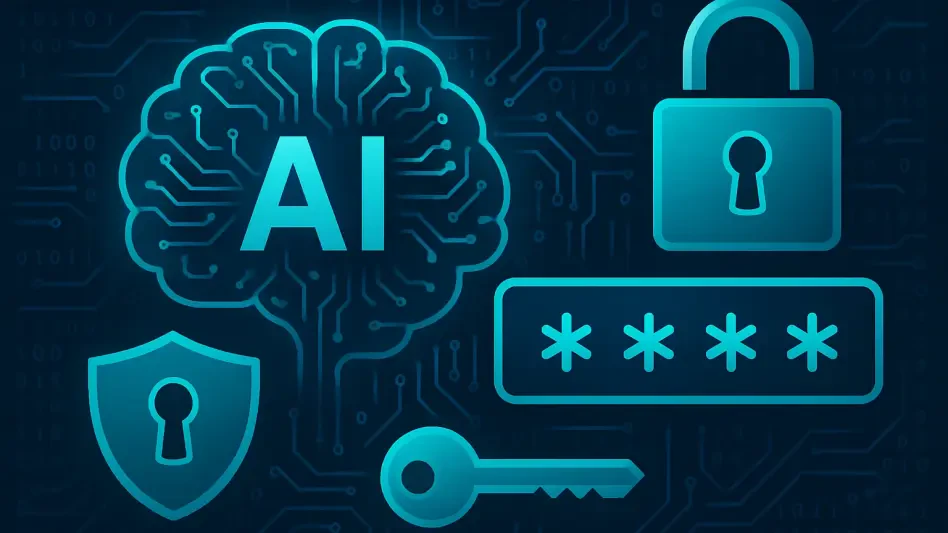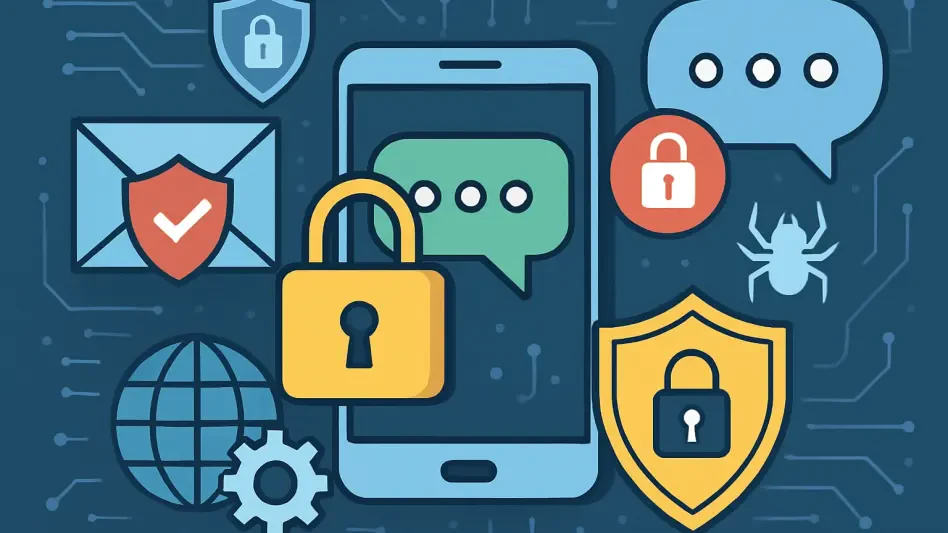In the midst of Cybersecurity Awareness Month, the digital realm stands as a cornerstone of daily life, intertwining personal, professional, and societal functions in ways that demand robust protection against ever-evolving threats. Spearheaded by the Department of Homeland Security (DHS) and the Cybersecurity and Infrastructure Security Agency (CISA), this year’s theme, “Building Our Cyber Safe Culture,” emphasizes a shared responsibility to fortify online defenses. Amidst a landscape of evolving threats, two elements emerge as pivotal: the steadfast relevance of passwords and the transformative, yet complex, role of artificial intelligence (AI) in cybersecurity. Passwords remain a fundamental barrier against unauthorized access, while AI presents both groundbreaking solutions and unprecedented risks. This exploration seeks to illuminate why these components are critical, how human behavior impacts their efficacy, and what steps can be taken to embed safer practices into everyday routines. The urgency to adapt and protect has never been clearer, as cyber threats continue to challenge individuals and organizations alike.
The Enduring Role of Passwords in Digital Defense
Passwords, though often regarded as a relic of early internet security, continue to serve as the primary shield for countless digital accounts across the globe. Despite the rise of biometric systems and multi-factor authentication (MFA), industry projections indicate that the password management market will exceed $7 billion by 2030, a testament to their lasting importance. Their effectiveness, however, is not inherent—it relies heavily on the choices users make. Simple or repetitive passwords can be easily compromised, rendering even the most advanced systems vulnerable to basic hacking attempts. As cyber attackers grow more sophisticated, the need for strong, unique passwords becomes a non-negotiable aspect of personal and organizational security. Cybersecurity Awareness Month serves as a timely reminder that overlooking this basic measure can lead to significant breaches, affecting everything from personal data to critical infrastructure.
Beyond their technical necessity, passwords carry a symbolic weight in the journey toward a cyber-safe culture. They represent the first, and often most accessible, line of defense that individuals can control directly. Yet, the persistent issue lies in widespread misuse—many still prioritize convenience over complexity, opting for easily guessable combinations or reusing the same password across multiple platforms. Such practices create a ripple effect; a single breach can unlock access to numerous accounts, amplifying the potential damage. This underscores a broader lesson: passwords are only as strong as the habits surrounding their creation and management. Educating users on crafting robust passwords—those with a mix of characters, numbers, and symbols—remains a focal point of current cybersecurity initiatives, aiming to transform this fundamental tool into a reliable safeguard against an ever-growing array of digital threats.
Human Behavior as a Barrier to Password Security
Delving into the reasons behind poor password practices reveals a deeply human challenge, rooted not in malice but in natural tendencies that prioritize ease over caution. Psychological factors such as convenience bias drive many to choose simple passwords that are easy to recall, while optimism bias fosters a false sense of invincibility, convincing users that cyber threats are unlikely to target them. Memory constraints further complicate the issue, as the average person struggles to retain complex combinations for multiple accounts. These ingrained behaviors often result in risky decisions, like reusing passwords or jotting them down in unsecured places, which hackers exploit with alarming efficiency. Recognizing these patterns is essential to addressing the root causes of digital vulnerability and fostering a shift toward more secure habits.
The consequences of these human limitations extend far beyond individual accounts, creating systemic risks within interconnected digital environments. When passwords are weak or duplicated, a breach in one area can cascade into others, compromising personal information, financial data, and even organizational systems. Cybersecurity Awareness Month highlights the need for a cultural awakening—acknowledging that individual actions contribute to collective security. Campaigns and educational efforts aim to reframe password management as a civic duty, akin to other routine safety measures. By understanding the psychological barriers at play, strategies can be developed to encourage better practices, such as using mnemonic devices for complex passwords or adopting tools that alleviate the burden of memory. This human-centric approach is vital for building resilience against cyber threats in a world increasingly reliant on digital access.
Leveraging Technology with Password Managers
In response to the challenges posed by human error, technology offers a powerful ally in the form of password managers, which simplify the task of maintaining strong digital defenses. These tools function as secure repositories, generating and storing unique, complex passwords for each account while requiring only a single master password to access them. This eliminates the need to remember multiple intricate combinations, reducing the temptation to resort to weak or reused passwords. Often described as a digital gatekeeper, a password manager ensures that security does not come at the expense of convenience. As part of the broader push during Cybersecurity Awareness Month, adoption of such solutions is championed as a practical step for users at all levels of technical expertise to enhance their online safety without overhauling their daily routines.
The benefits of password managers extend into fostering a proactive mindset toward cybersecurity, aligning with the goal of building a cyber-safe culture. By automating the creation of strong passwords—often incorporating random strings of characters, numbers, and symbols—these tools counteract the pitfalls of human memory and behavioral biases. Additionally, many offer features like breach alerts, notifying users if their credentials appear in leaked databases, thus enabling swift action to mitigate risks. Integrating password managers into everyday digital habits represents a small but impactful change, one that significantly lowers the likelihood of unauthorized access. Educational outreach during this awareness period emphasizes their accessibility, encouraging individuals and organizations to embrace technology as a means of bridging the gap between human limitations and the demands of modern security standards.
AI’s Dual Impact on Cybersecurity Dynamics
Artificial Intelligence stands as a transformative force in the realm of cybersecurity, wielding the power to both undermine and reinforce digital protections in unprecedented ways. On the threatening side, AI equips cybercriminals with advanced capabilities to crack passwords at alarming speeds, analyze behavioral patterns, and predict likely combinations by scouring publicly available data. These automated techniques enable attacks that are not only faster but also more targeted, challenging traditional security measures that rely solely on password strength. The sophistication of AI-driven threats necessitates a reevaluation of how defenses are structured, pushing for more dynamic and adaptive responses to keep pace with adversaries who leverage cutting-edge technology to exploit vulnerabilities in digital systems.
Conversely, AI also offers immense potential to bolster cybersecurity when harnessed effectively, presenting a counterbalance to its risks. When integrated with robust passwords and multi-factor authentication, AI-powered systems can detect anomalies in user behavior, flag suspicious activities, and adapt to emerging threats in real time. This capability transforms security from a static barrier into a responsive mechanism, capable of evolving alongside the tactics of cybercriminals. Cybersecurity Awareness Month underscores the importance of staying informed about AI’s dual nature, advocating for its strategic use in enhancing protections while remaining vigilant against its misuse. Striking this balance is critical, as AI continues to shape the threat landscape, demanding that both individuals and organizations adopt a forward-thinking approach to safeguard sensitive data and maintain trust in digital interactions.
Shaping a Cyber-Safe Future Through Collective Action
Reflecting on the insights shared during Cybersecurity Awareness Month, it becomes evident that the path to digital security is paved with both enduring practices and innovative adaptations. Passwords stand firm as a foundational element of protection, despite the challenges posed by human behavior, while tools like password managers emerge as vital aids in overcoming those obstacles. The dual nature of AI captivates discussions, revealing its capacity to both threaten and enhance cybersecurity efforts. Each of these components plays a crucial role in shaping a comprehensive defense strategy that addresses both technical and behavioral dimensions of online safety.
Looking ahead, the focus must shift to actionable steps that sustain the momentum built during this period of heightened awareness. Encouraging widespread adoption of password managers, promoting the use of multi-factor authentication, and investing in AI-driven security solutions are practical measures that can fortify digital environments. Beyond individual actions, fostering collaboration between governments, businesses, and communities to share knowledge and resources will amplify the impact of these efforts. By embedding cybersecurity into the fabric of daily life—much like routine safety habits—the vision of a cyber-safe culture can be realized, ensuring that the digital world remains a secure space for all in the years to come.







